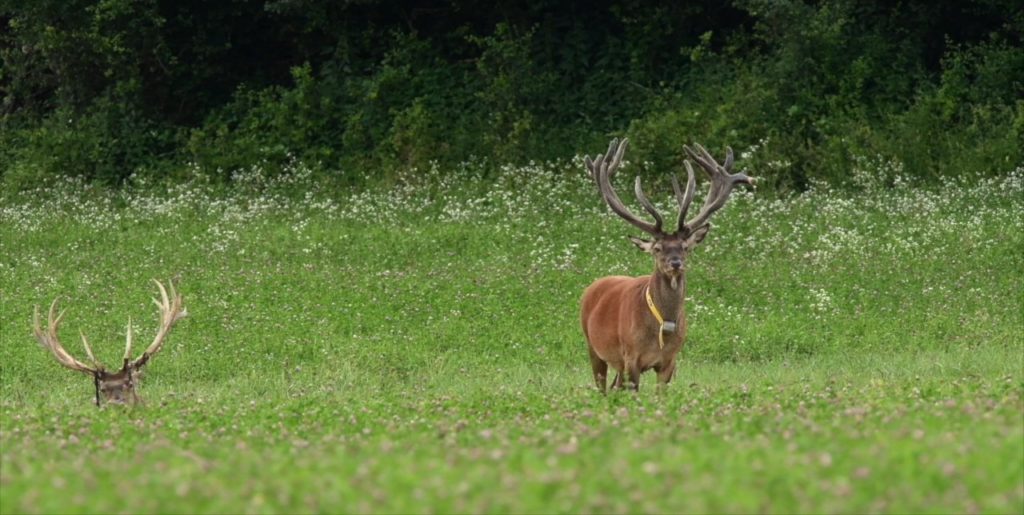Bence Mészáros, a student of the University of Sopron's bachelor's degree in wildlife engineering, has spent more than one and a half years researching the wildlife management aspects of the game crossings on the M80 motorway between Rönök and Csákánydoroszló. This spring, Bence and his supervisor, Dr. Tamás Tari, submitted an application to our foundation's call for research funding. Their successful application won a grant and the study was extended with the installation of two additional wildlife cameras. We congratulate Bence and his supervisor for their work and are pleased to share the results of the research below.
Wildlife management assessment of the M80 motorway section between Rönök and Csákánydoroszló
By Bence Mészáros, supervised by Dr. Tamás Tari
The motorway network in Hungary has undergone significant expansion in recent decades. In the region where I live, the foundation stone of the M80 motorway was laid in Körmend on 8 March 2018, marking the first expressway at the gateway to the Őrség region. From a transport point of view, there are many positive benefits of such an investment, and we, the people, are the ones who feel the positive impact. From the point of view of wildlife, however, such a linear facility has a negative impact on the creatures living there. Fragmentation is the fragmentation of a large contiguous habitat. Roads and motorways used to boost transport are a threat to natural values and habitats from the moment they are built, but they also have a number of adverse effects during their use. They impede animal movement, fragment and then isolate habitats. Animals are forced to cross their usual turnpikes, increasing the likelihood of wild vehicle collisions.
My research was looking at whether we could mitigate the negative impacts on animals by creating wildlife crossings. This was due to the fact that on the above-mentioned M80 motorway between Rönök and Csákánydoroszló, which was opened on 21 October 2021, 4 big game crossings were installed and I have been able to monitor their operation almost since their completion(Figure 1).

Figure 1: Study area with wildlife crossing 4
The study started on 19 January 2022 and used two methods. One method was 24-hour monitoring using automatic wildlife surveillance cameras placed at game crossings, while the other was a seasonal survey of carcasses at game crossings and their immediate surroundings, which was carried out over the four seasons. I started the surveys of the crossings with two cameras, which I was able to increase to four with the support of the Fauna and Flora Foundation, and I was able to carry out the related monitoring with the support of the Foundation. The cameras allowed me to monitor the use of the passages in an uninterrupted way, identifying species, number of individuals and time(Figure 2).

Figure 2: Deer at the gateway
First, the results of the mortality survey are presented. During the summer months I counted 28 dead animals, in autumn this number increased to 46 groups of dead animals. Winter showed a decrease, with only 11 hits. Spring was the spring with the highest number of sightings, 82, due to the higher presence of wildlife species moving to the seedings. During the period studied, I counted a total of 167 mortalities. Differences were observed between the transects. For the first transect, similar values were obtained for summer and autumn, no dead animals were found during the winter counts, spring brought a slight increase. For the second gateway, autumn and spring gave similar results, but winter was also outstanding compared to gateways 1 and 3. Looking at gateway 3, a gradual increase is seen, with a decrease in winter. After the summer, the autumn resulted in double the summer values, and then the winter survey failed to count any deadfall here either. Spring shows a sharp increase in gateway use. At gateway 4, there was also an increase from summer to autumn, followed by a decrease in winter, but spring brought a spike at gateway 4, as at gateways 2 and 3. Overall, winter resulted in the lowest values at all gates except gateway 2(Figure 3).

Figure 3: Seasonal deadweight distribution by gateway
In terms of habitat, it was observed that the game used agricultural land most intensively during the summer and autumn months. The use of the gateway was highest in the spring months, while the forest and agricultural margins were used only in spring and autumn. Forest is used at high levels throughout the year, but the most intensive use is seen during winter. The total of 167 mortality habitats found during the study period are distributed as follows: passage 50; forest 74; forest, agricultural margins 3; agriculture 40(Figure 4).

Figure 4: Prior distribution of the number of fugitives
Of the 167 carcasses found, the species distribution is as follows; deer carcasses 107; roe deer carcasses 31; wild boar 29. By gateway, 18 carcasses found in gateway 1; 13 deer; 3 roe deer; 2 wild boar. At gateway 2, a total of 28 carcasses were counted, of which 19 were roe deer; 4 were roe deer; 5 were wild boar. At gateway 3, I counted a total of 37 carcasses, of which 21 were roe deer; 13 were roe deer; 3 were wild boar. At gateway 4, a total of 84 carcasses were counted, of which 54 were roe deer; 31 were roe deer; 29 were wild boar(Figure 5).

Figure 5: Distribution of flushes by game species per gateway
The variation of the number of deadheads as a function of distance was investigated. A Kruskal-Wallis test for normality was performed; the H-score was 10.63 with a p-value of 0.06583, which is greater than 0.05, i.e. no significant difference. In Mann-Whitney pairwise test, left_25 was different from left_50 and right_1 respectively. The mean number of observed deadheads at the gateways was 3.12±1.72(Figure 6).

Figure 6: Backscatter distribution at the gateway and as a function of distance
In the following, I present the results of 21 months of monitoring by camera traps. The graph shows the average presence per day for all the crossings. The more intensive use in winter, early spring and early autumn at the end of summer can be observed. The first year started off with a high level of food, with March showing a decline, similar to the early summer. A gradual decrease is seen until the end of the year, then the second year starts with an increase in February and a steady decrease until August, finally a high value is seen again in September(Figure 7).

Figure 7: Presence/day for all gateways
Looking at the species, the deer were typically most abundant in the period from May to November, with the highest levels in September 2023. Wild boar were more abundant in both years except for the months of April and May. Deer showed quite large variations initially, but levelling off during the year 2023. When observing the occurrence of fox and hare, it can be seen that they were present in low numbers during the period studied. Fallow deer were more abundant during the growing season, similar to the antlered deer(Figure 8).

Figure 8: Monthly distribution by species for all gateways
Overall, the majority of the visits to the crossings ended in successful crossings. Most unsuccessful crossings occurred in February and April 2022. The first year under study shows a high number of appearances, which decreased over time, with a further increase only at the end of 2023(Figure 9).

Figure 9: Distribution of crossing modes for all crossings
When examining the average number of presences recorded at the four gateways, it was found that gateway 2 was the most intensively used, followed by 4, 3 and 1. The reason for this can be found in the habitat characteristics of the gateways, which will be discussed later. Looking at successful crossings by species, it can be seen that deer crossings are most frequent during the winter and spring months. Roe deer use crossings from the beginning to the end of the growing season. The use of wild boar has decreased compared to the first year. Fallow deer showed use mostly during the growing season, with more use in the first year compared to the second year. In the case of the fox, the main use was during the late winter and spring period. Similarly to the fox, the brown hare showed a similar pattern of use mainly during this period(Figure 10).

Figure 10: Distribution of successful crossings by species for all crossings
Finally, I analysed the species' passage use during the day. Similarly, antelope and wild boar used the gateways from early evening until dawn, but the most frequent period was around 9 pm. The large excursions of the fallow deer are due to the paucity of data, so no conclusions can be drawn. Deer use peaks in the late afternoon and early evening around 17-18 h, with daytime use also observed(Fig. 11).

Figure 11: Temporal distribution of crossings by species for all crossings
Based on the results of the survey, most of the mortality counts were found on the forest side of the passages. Broken down by distance, the left side typically had more deadfall closer than 25 meters to the gateway, while the right side had more than 25 meters farther. In all cases, the left side was upstream of the forest, and the right side, with the exception of gateway 2, was upstream of agriculture. The agricultural side was mainly used during the summer and spring when the crops were harvested. Based on abundance data, the passages were mostly used by roe deer, with similar proportions of deer and wild boar. Camera monitoring showed that the big game species studied used the passages connecting the forest with agricultural areas mainly during the growing season. While the gateway connecting forest to forest was used throughout the year. The most intensive use was observed at gateway 2, which connects forest to forest, suggesting that these costly structures should be installed primarily in forested areas, where both roe deer and wild boar are likely to be present, in order to increase their use. The game is obviously interested in cultivated crops, and it may be advisable to create different wild fields around the crossings during the initial period or even later, to help the game become accustomed to them. Shrubby vegetation planted on ramps can also greatly assist the acclimatisation of the game, as well as making human passage more difficult and providing greater cover to better filter out disturbing light and sound effects. In terms of placement, it is important to keep them as far away as possible from human-disturbed areas. It can be seen in the case of Passes 1 and 3, particularly the latter, that the constant disturbance (off and on ramps, additional linear facilities in the vicinity) greatly reduces the intensity of use. It is essential to keep the crossings quiet, minimise human disturbance and ensure that they are used for their intended purpose. Many people do not know exactly what these crossings are for and often use them in different ways without proper information.
The results of my research will be presented in more detail in my thesis at the Faculty of Forest Engineering, University of Sopron, and at the Faculty of Forest Engineering's Scientific Student Conference on 6 December 2023.



